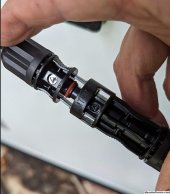This is the cable that I bought off amazon.
I don't see any info on there about the ends used. See if you can find something in case I overlooked it.
I don't see any info on there about the ends used. See if you can find something in case I overlooked it.



